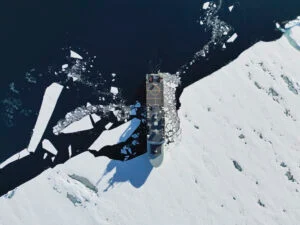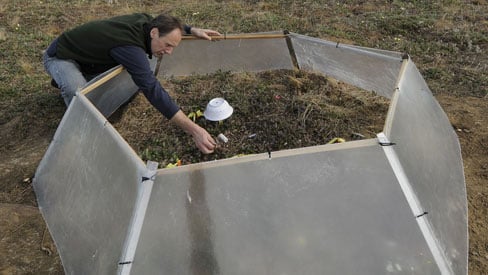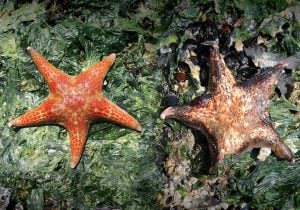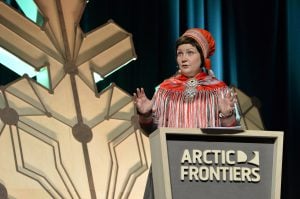
People & Culture
On thin ice: Who “owns” the Arctic?
As the climate heats up, so do talks over land ownership in the Arctic. What does Canadian Arctic Sovereignty look like as the ice melts?
- 4353 words
- 18 minutes
This article is over 5 years old and may contain outdated information.
Science & Tech

What impact will global warming have on tundra ecosystems in the Arctic? For the last two decades, University of British Columbia researcher Greg Henry has been endeavouring to find out. His method? A simple yet effective experiment that involves metre-square, open-topped Plexiglas chambers placed over bits of tundra, which raises the temperature of the plots by a couple of degrees, simulating a warmer climate.
Since 1992, Henry and his student researchers have been using these chambers to warm seven different tundra ecosystems in Nunavut’s Ellesmere Island and Daring Lake, N.W.T., in order to discover how individual plant species and different plant communities react.
His experiment has been replicated by scientists from around the world. Their data is showing that, for many species, warmer climates are breeding healthy, strong individual plants that flower early and produce large, fertile seeds. When they look at entire plant communities they’re seeing more complex changes.
“In terms of biodiversity, we’re finding that the woody plants, the shrubs, are taking over,” says Henry. “They’re increasing their cover and biomass and they’re creating shade, which squeezes out ground-hugging organisms such as moss and lichens.”
An increasingly woody tundra could raise ground temperatures: while shrubs absorb more carbon dioxide than moss or lichens — mitigating the effects of global warming caused by the greenhouse gas — their dark leaves and branches also soak up more heat from the sun.
“One prediction is that if the surface changes from a light-coloured tundra dominated by grasses, lichens and mosses, to a dark-coloured surface of shrubs, it could have the same warming effect as doubling the amount of CO2 in the atmosphere,” says Henry.
Outside the warming chambers, however, other factors are at play — especially caribou and muskox. These large herbivores consume tons of vegetation each year, and new research is suggesting that they may help limit the spread of shrubs that Henry and his colleagues are seeing.
Henry’s research is showing how ingenuity, long-term monitoring and international coordination can bring new understanding of the changes occurring in the Arctic — changes that affect the entire globe.


Are you passionate about Canadian geography?
You can support Canadian Geographic in 3 ways:

People & Culture
As the climate heats up, so do talks over land ownership in the Arctic. What does Canadian Arctic Sovereignty look like as the ice melts?

Environment
As the impacts of global warming become increasingly evident, the connections to biodiversity loss are hard to ignore. Can this fall’s two key international climate conferences point us to a nature-positive future?

Environment
The uncertainty and change that's currently disrupting the region dominated the annual meeting's agenda

Science & Tech
The Canadian High Arctic Research Station is set to open in Cambridge Bay, Nunavut, later this year. How will it affect our understanding and appreciation of the North and the rapid change occurring there?